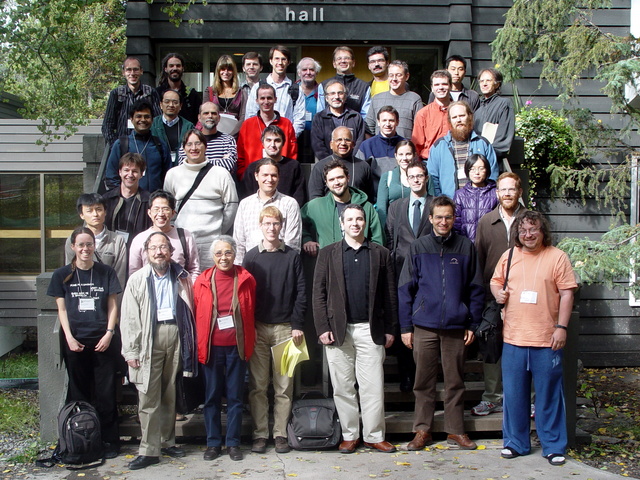Number Theory and Physics at the Crossroads (08w5077)
Organizers
Charles Doran (University of Alberta)
Sergei Gukov (Caltech)
Helena Verrill (Louisiana State University)
Noriko Yui (Queen's University)
Don Zagier (Max-Planck Institute Bonn)
Description
The Banff International Research Station will host top researchers in its workshop on "Number Theory and Physics at the Crossroads" next week, September 21 - 26, 2008. Modular forms have long played a key role in the theory of numbers,
including most famously the proof of Fermat's Last Theorem. Through
its quest to unify the spectacularly successful theories of quantum
mechanics and general relativity, string theory has long suggested
deep connections between branches of mathematics such as topology,
geometry, representation theory, and combinatorics. Less well-known
are the emerging connections between physics, in particular,
string theory and number theory.
Mathematicians and physicists alike will converge on BIRS
for a week of both introductory lectures, designed to educate one
another in relevant aspects of their subjects, and research talks
at the cutting edge of this rapidly growing field. In fact, the
first workshop on ``Modular Forms and String Duality (06w5041)''
took place at BIRS in June 2006 with an enormous success, and
the request of having another workshop covering areas at the crossroads
of number theory and physics has been overwhelming. This
workshop brings together to BIRS leading mathematicians and physicists
working on the same or related problems in number theory and
physics (e.g., string theory) from different angles.
The Banff International Research Station for Mathematical Innovation and Discovery (BIRS) is a collaborative Canada-US-Mexico venture that provides an environment for creative interaction as well as the exchange of ideas, knowledge, and methods within the Mathematical Sciences, with related disciplines and with industry. The research station is located at The Banff Centre in Alberta and is supported by Canada's Natural Science and Engineering Research Council (NSERC), the US National Science Foundation (NSF), Alberta's Advanced Education and Technology, and Mexico's Consejo Nacional de Ciencia y Tecnología (CONACYT).






